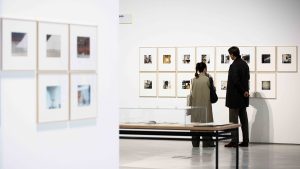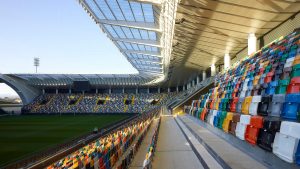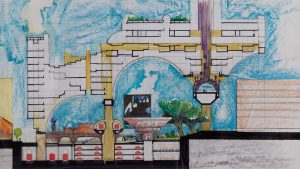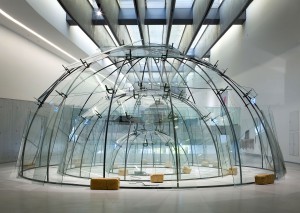- full price € 15 at the box office - € 14 online
- reduced price € 12 at the box office - € 11 online
for young people aged between 18 and 25 (not yet turned 25); for groups of 15 people or more; La Galleria Nazionale, Museo Ebraico di Roma ticket holders; upon presentation of ID card or badge: Accademia Costume & Moda, Accademia Fotografica, Biblioteche di Roma, Centro Sperimentale di Cinematografia, Enel (for badge holder and accompanying person), FAI – Fondo Ambiente Italiano, Feltrinelli, Gruppo FS, IN/ARCH – Istituto Nazionale di Architettura, Sapienza Università di Roma, LAZIOcrea, Palazzo delle Esposizioni, Amici di Palazzo Strozzi, Accademia Nazionale di Santa Cecilia, Scuola Internazionale di Comics, Teatro Olimpico, Teatro dell’Opera di Roma, Teatro di Roma, Università degli Studi di Roma Tor Vergata, Youthcard; upon presenting at the ticket office a Trenitalia ticket to Rome purchased between 27 November 2024 and 21 April 2025
- open € 18
valid for one year from the date of purchase
- free
minors under 18 years of age; upon presentation of disability card or accompanying letter from hosting association/institution for: people with disabilities and accompanying person, people on the autistic spectrum and accompanying person, deaf people, people with cognitive disabilities and complex communication needs and their caregivers, people with serious illnesses and their caregivers, guests of first aid and anti-violence centres and accompanying operators, residents of therapeutic communities and accompanying operators; EU Disability Card holders and accompanying person; MiC employees; myMAXXI cardholders; registered journalists with a valid ID card; European Union tour guides and tour guides, licensed (ref. Circular n.20/2016 DG-Museums); 1 teacher for every 10 students; AMACI members; CIMAM – International Committee for Museums and Collections of Modern Art members; ICOM members; journalists (who can prove their business activity); European Union students and university researchers in art history and architecture, public fine arts academies (AFAM registered) students and Temple University Rome Campus students from Tuesday to Friday (excluding holidays); IED – Istituto Europeo di Design professors, NABA – Nuova Accademia di Belle Arti professors, RUFA – Rome University of Fine Arts professors; upon presentation of ID card or badge: Collezione Peggy Guggenheim a Venezia, Castello di Rivoli Museo d’Arte Contemporanea, Sotheby’s Preferred, MEP – Maison Européenne de la Photographie; on your birthday presenting an identity document
Casa Balla | until 27 April 2025
- full price ticket € 18
- reduced price ticket € 15
for groups of 12 people in the same tour; myMAXXI membership card-holders; registered journalists with valid ID
- reduced price ticket € 12
under 14 years of age
- free ticket
disabled people + possible accompanying person; minors under 3 years of age (ticket not required)
Collection
MAXXI’s Collection of Art and Architecture represents the founding element of the museum and defines its identity. Since October 2015, it has been on display with different arrangements of works.























































SPAZIO / MAXXI duepercento competition
On the occasion of the MAXXI inauguration, and within the ambit of the exhibition SPACE, the winning entries from the international competition MAXXI 2per100 will also be unveiled.
The competition, announced in October 2008 by the Ministry of Infrastructures and Transport together with the Ministry for Cultural Activities and Assets, applies Law no° 717 of 1949, known as “the 2% Law”, according to which State administrators and public bodies that order the construction of public buildings shall devote to the realization of works of art no less than 2% of the total expenditure foreseen for the project. The jury selected from among the 11 finalists, the two winning projects by Maurizio Mochetti for the museum atrium and Massimo Grimaldi for the external area.
Maurizio Mochetti — Rette di luce nell’iperspazio curvilineo, 2010
The project Maurizio Mochetti conceived for MAXXI reiterates a few constants that have been present in his work since his debut in the mid-1960s: the use of light, conceived as a physical constant and a manipulatable plastic element; the utilization of sophisticated technologies; the pursuit of an unconventional relationship with architectural space. For Mochetti, technical devices, whether intended to spectacularize or to camouflage, are essentially the tools that highlight currents or points of maximum concentration of energy, or the melding of material and space as part of a poetic that echoes elements of futurist theory and Lucio Fontana’s creative practices. Speed, force, tension, resistance, reflex, weight, elasticity and power are the terms Mochetti has used in his career to describe his idea of art as a physical and mental experience intended to change our perceptive profile and thus our comprehension of the world. His work for the museum calls for the permanent installation of four long red-painted ‘tubes’ hung with steel tie bars and containing within them a complex light-projection device that throws a band of red light onto the architecture, designing profiles that change depending on the light’s angle of incidence.
Massimo Grimaldi — Emergency’s Paediatric Centre in Port Sudan Supported by MAXXI, 2010
Grimaldi’s project utilizes the competition’s funding to construct a paediatric hospital managed by the association Emergency in Juba, Sudan. The artist will photograph or commission photography of the hospital’s construction as well as its daily activities upon completion. The images will be projected on one of the external walls of the museum in a continuous cycle. As in his other projects, which have raised large amounts of money for Emergency’s humanitarian efforts, Grimaldi poses questions that range from an institutional critique of the system of art to a deeper reflection on the principles of reality and function. In a process of subtraction, function becomes a concrete gesture with conceptual and ethical implications. In his project for the MAXXI, a new architectural entity (the museum) generates another (the hospital) through an artistic process that calls into question the functions and values on which the institution is based. In the words of the artist, “the success of a work becomes the historic failure of what it believed itself to be”.